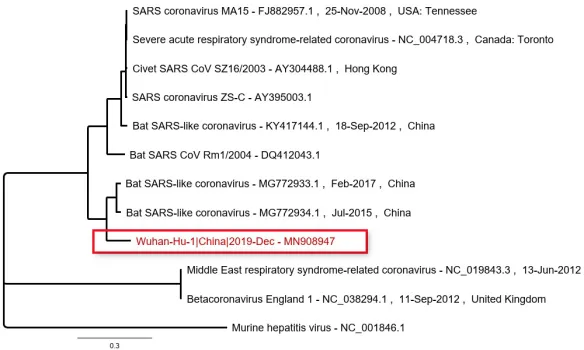Researchers from Tecnológico de Monterrey are using algorithms in an attempt to analyze the DNA of the coronavirus that has appeared in China to find information that could be used for possible vaccines.
Eduardo Rodríguez, a researcher professor from the School of Engineering and Sciences (Escuela de Ingeniería y Ciencias, EIC), explained that phylogenetic reconstruction could be addressed as a problem of combinatorial optimization and resolved through advanced computational algorithms.

The scientist explained that combinatorial optimization is a branch of applied mathematics where several fields intersect, including computer science, operations research, and artificial intelligence.
“We’re attempting a phylogenetic reconstruction by using the DNA from multiple strains of coronavirus in order to identify a common ancestor for the nCoV-2019 virus that allows us to provide useful information for developing a vaccine,” he said.
The professor from the Tec’s Guadalajara campus mentioned that this analysis is possible thanks to the Chinese health authorities having published the genome for the nCoV-2019 virus to the GenBank database when the first outbreaks were identified in Wuhan, China.
“We’re attempting a phylogenetic reconstruction by using the DNA from multiple strains of coronavirus in order to identify a common ancestor for the nCoV-2019 virus that allows us to provide useful information for developing a vaccine.”

“These days, technology gives us a significant advantage for developing a vaccine, as it has allowed the genome structure to be shared in real time.
“This enabled different universities and research centers around the world to begin the hunt for solutions,” acknowledged the EIC researcher.
The genome sequence associated with the new coronavirus from Wuhan, China, is available on GenBank through the National Center of Biotechnology Information (NCBI) website, which provides the global biomedical community with free and easy access.
On January 11, the Chinese health authorities announced the identification of more than 40 human infections as part of this outbreak, which was reported for the first time on December 31, 2019, according to the NCBI.
“Rapid access to sequence data from public databases such as GenBank plays a vital role in helping countries develop specific diagnostic kits for disease outbreaks like this one,” reported the NCBI website.
ALSO READ:





